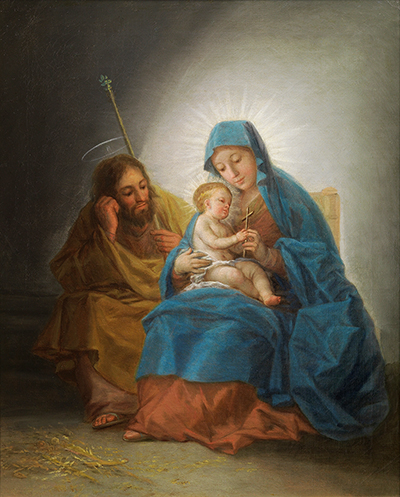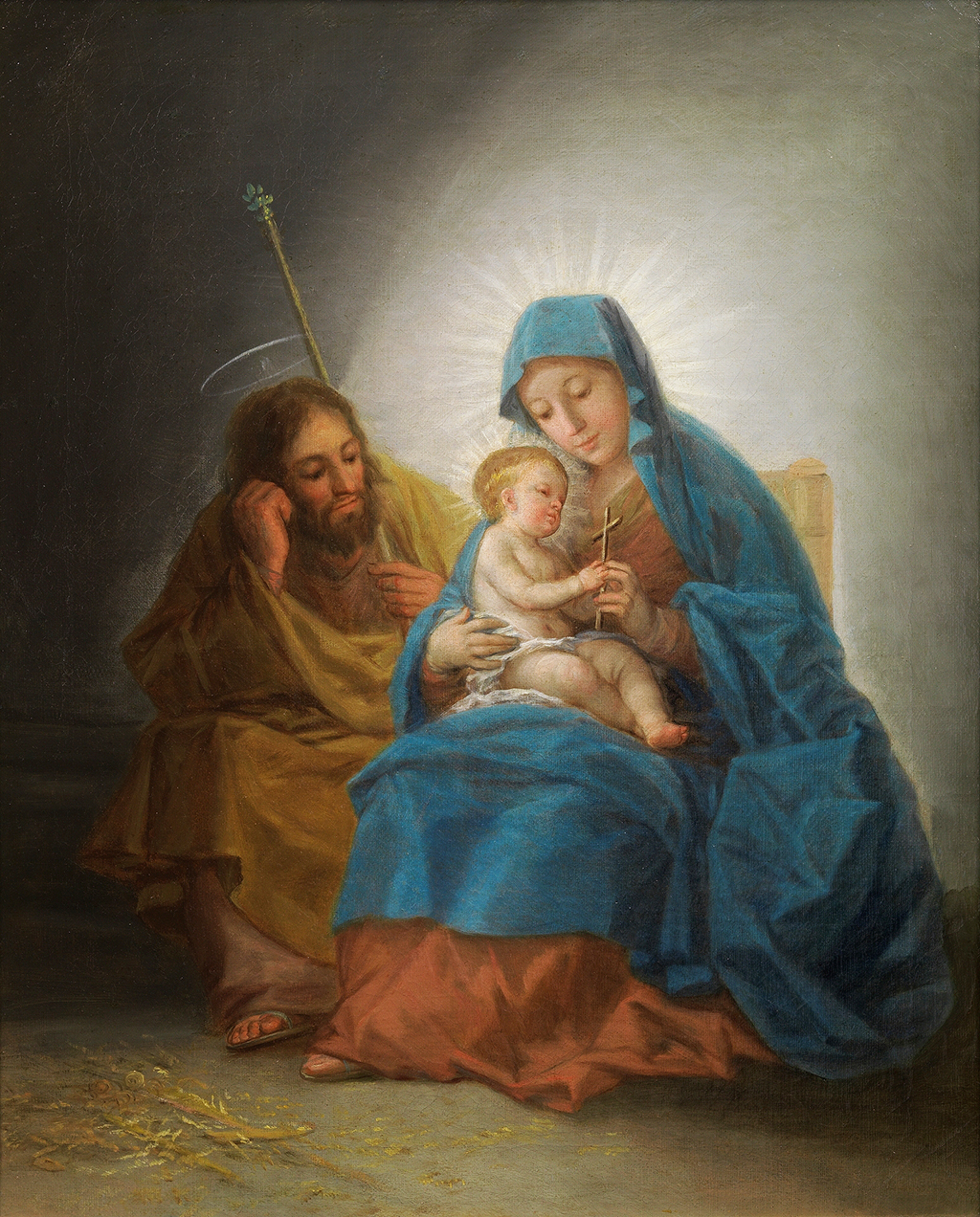This particular painting is dated 1780. Francisco de Goya painted it. He was a renowned artist who resided in Spain and spent the prime of his life colouring his dreams and imagination. The Holy Family is a painting that falls under the religious genre.
The picture shows The Virgin Mary and her husband Joseph, the carpenter. On the floor, there are wood shavings, which indicate that the scene occurred in Joseph’s carpentry shop. Further, the child is seated on Mary’s lap while Joseph stares at the boy as he smiles. There is also another child right beside Mary’s left arm. This painting presents a rather sombre mood. The setting is dark, and the light in the picture only comes from the child on Mary’s lap and Mary herself. It then fades naturally as it edges towards Joseph. This perhaps symbolizes that the Child will be the light of the world but will, later on, meet a terrible fate. The painting is best suited to be hanged in place of religious gatherings as it displays the core aspect of Christianity, the birth of Christ.
This masterpiece is stored in Museo Del Prado, also known as The Prado Museum. The museum is located in Madrid, Spain. There are also several other paintings drawn by Francisco de Goya on display there. Francisco loved to draw using the slashing backstrokes method. This was a rather unpopular technique among painters then. However, this did not discourage him even the slightest bit. Later on, in the 20th century, painters would follow suit and start using this technique. When creating his paintings, he used oil on canvas. It was a popular medium among painters then because it lasted long and gave the paintings a natural feel.
Among the related paintings to this one is Tobias and the Angel. Goya painted it in a series of paintings called `Escenas de Tobias Como prefiguracion de Cristo’ that belonged to a religious genre. This series depicted the early life of Christ and various significant religious figures from the Bible. During his sunset years, Francisco became completely deaf, and regardless of this fact, he continued painting. At this point, he was a cultivated craftsman who had encouraged numerous youthful painters and shown them some things about the artwork. Therefore, he became a source of inspiration to the latter painters. Lastly, he popularized the slashing backstrokes painting technique. This is now the base of modern artistry.





